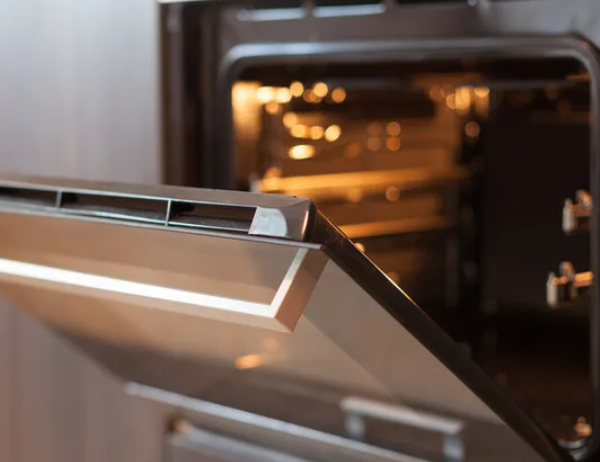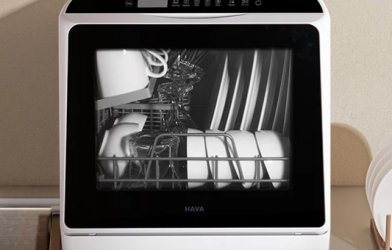Subtotal $0.00
When it comes to purchasing a new wall oven, one of the most important decisions you’ll make is whether to go for a convection or conventional oven. Both types have their own unique benefits and drawbacks, so choosing the right one can make a significant difference in your cooking experience. In this guide, we’ll compare convection and conventional ovens to help you determine which is best suited for your kitchen.
Understanding Conventional and Convection Ovens
Conventional Ovens: Often referred to as traditional ovens, these appliances use stationary heating elements to generate heat. The heat radiates throughout the oven cavity, gradually cooking your food. This method provides a more traditional cooking experience that most of us are familiar with.
Convection Ovens: These ovens feature a fan that circulates hot air around the oven, ensuring even heat distribution. This results in faster and more consistent cooking compared to conventional ovens.
Advantages of Conventional Ovens
Familiar and Simple: Conventional ovens are user-friendly and have been a staple in kitchens for years, making them an easy choice for many home cooks.
Moist Heat: Traditional ovens create a more humid cooking environment, which is ideal for dishes that require moisture, such as baked goods or slow-roasted meats.
Temperature Flexibility: Some chefs enjoy the flexibility of adjusting the heat by changing the rack position, as different rack heights can yield different cooking results.
Cost-Effective: Conventional ovens are typically less expensive upfront compared to their convection counterparts, making them a budget-friendly option for many families.
Benefits of Convection Ovens
Faster Cooking: The fan-assisted heat circulation in convection ovens speeds up the cooking process, allowing for quicker meals without compromising on quality.
Better Browning: The even heat distribution helps achieve better browning and crisping on foods like roasted vegetables and baked goods.
Energy Efficient: Because convection ovens cook food faster, they often consume less energy, leading to potential savings over time.
Disadvantages of Conventional Ovens
Uneven Heat: Conventional ovens can have hot spots that lead to uneven cooking. This means you may need to rotate your dishes to ensure they cook evenly.
Longer Cooking Times: Compared to convection ovens, conventional ovens usually take longer to cook food, which might be a disadvantage if you need to prepare meals quickly.
Less Versatile: Conventional ovens might not offer the same level of flexibility as convection ovens, especially when it comes to cooking multiple dishes at once without flavor transfer.
Heat Buildup: The cooking process in conventional ovens generates a significant amount of heat, making your kitchen warmer during long cooking sessions.
Disadvantages of Convection Ovens
Learning Curve: With the faster cooking time and even heat, you may need to adjust baking times and temperatures if you’re used to conventional cooking methods.
Risk of Drying Out: The constant air circulation can lead to some foods drying out if not carefully monitored.
Not Ideal for Delicate Foods: The strong airflow may disturb delicate dishes, such as soufflés or tall cakes, which require gentler cooking conditions.
Higher Initial Cost: Convection ovens often come at a premium price, which could affect your budget when outfitting your kitchen.
Space Considerations: Due to the fan and additional components, convection ovens can be slightly larger, requiring more kitchen space.
Choosing the Right Oven for You
Now that you’re familiar with the strengths and weaknesses of both convection and conventional ovens, it’s time to make your decision. Here are a few factors to help guide your choice:
Baking Preferences:
- Conventional Ovens: Best for traditional recipes that call for longer cooking times and where moisture retention is key.
- Convection Ovens: Ideal for those who prefer faster cooking times and consistent heat distribution for even results.
Speed vs. Consistency:
- Even Browning: If you love achieving perfectly browned and crispy food, a convection oven is your best bet.
- Faster Cooking: For those who need a quicker cooking process, convection ovens will help speed up the process significantly.
Budget:
- Lower Upfront Cost: Conventional ovens are typically more affordable when compared to convection models.
- Energy Savings: While convection ovens may cost more initially, their faster cooking time could lead to energy savings over the long term.
Hybrid Ovens: The Best of Both Worlds
If you’re unsure about committing to either convection or conventional cooking, a hybrid oven might be the perfect solution. These ovens allow you to switch between convection and traditional modes, giving you the flexibility to cook in whichever style suits your needs. While hybrid ovens may come with a higher price tag, they offer versatility for those who enjoy both crispy baked goods and perfectly roasted meats.
Conclusion
Choosing between a conventional and convection oven ultimately depends on your cooking habits, budget, and kitchen space. Whether you opt for the classic, slower cooking of a conventional oven or the faster, more efficient convection model, both types offer great benefits. If you’re looking for flexibility, hybrid ovens provide the ideal solution, combining the best of both worlds to suit any culinary need.












